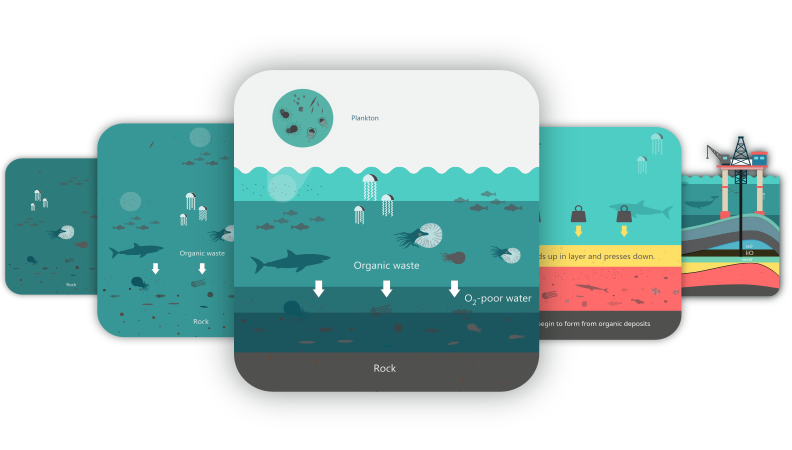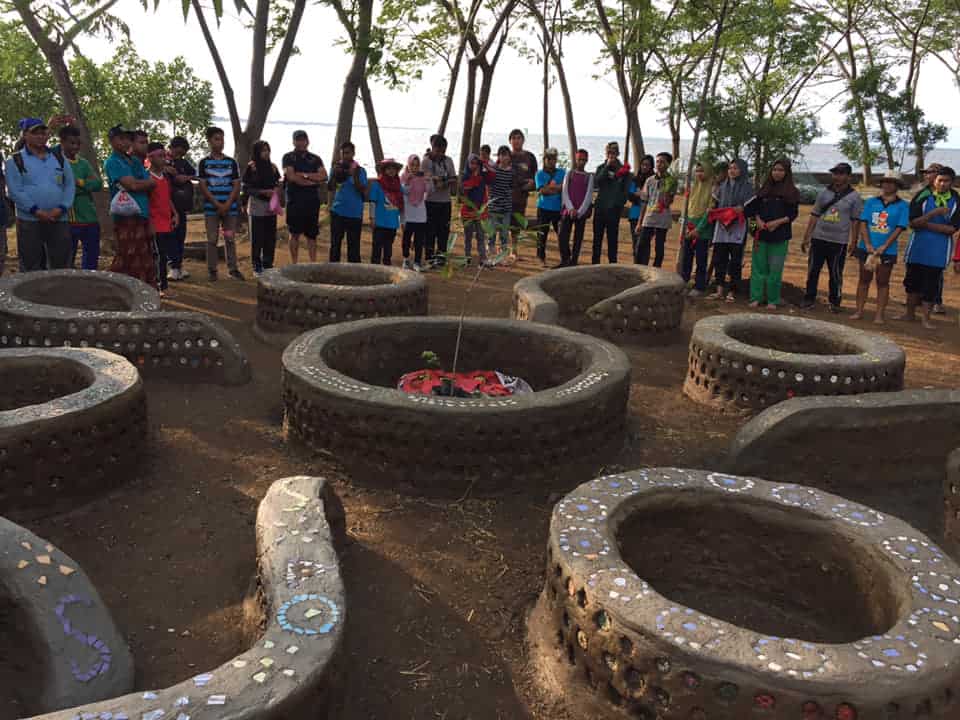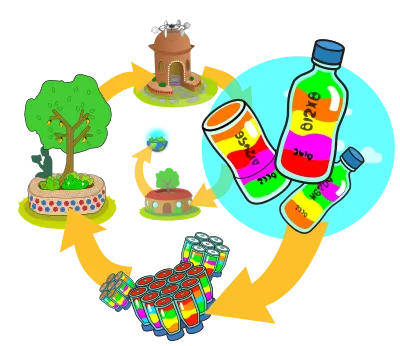Combining time-tested local building traditions with ecobricks, we can safely secure our plastic for the long-term in beautiful and functional earthen constructions.
Earth and Ecobrick building methods are inspired by the natural building traditions of our ancestors. Countless cultures around the world have their ancestral traditions of working with the earth to build. Many of their structures have stood for centuries. Some for millenia! By adapting their ancient methods to our modern challenges, we can put our ecobricks to good and green use.
With earth and ecobrick methods not only can we build beautiful, strong and resilient structures, we can secure our plastic out of industry and out of the biosphere. Such constructions, rather than result in emissions, actually avoid them, while absorbing physical carbon within them. This ensures that we are not just creating homes, but so too a common home for all the others with which we share ecosystem and biome.
What is Earth Building?
The organic traditions of yesterday have practical relevance for our green visions today.
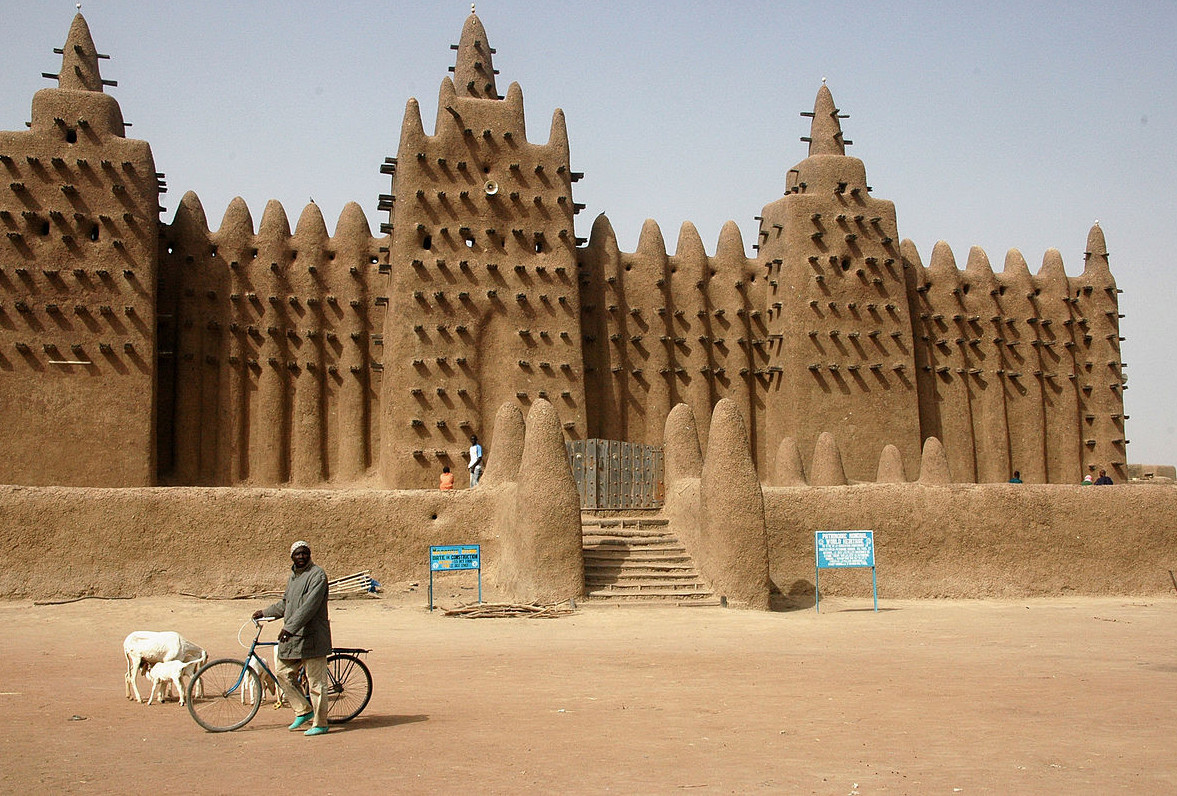
Mud Mosque in Djene, Mali
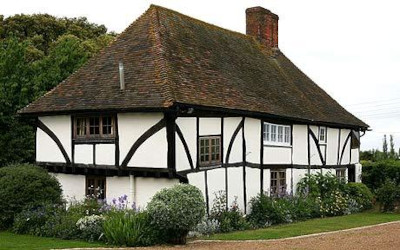
16th Century Tudor Cob Home - England
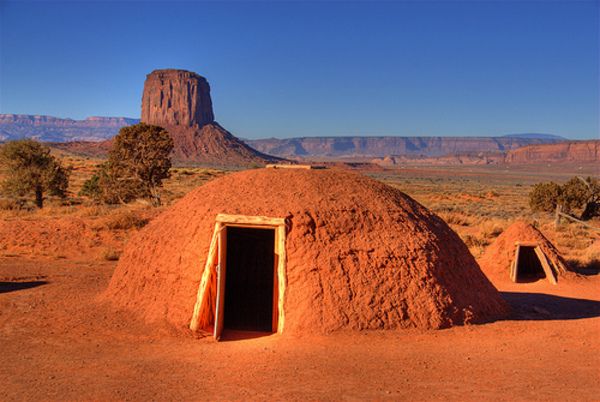
Ancient Navajo Dwelling -New Mexico, America
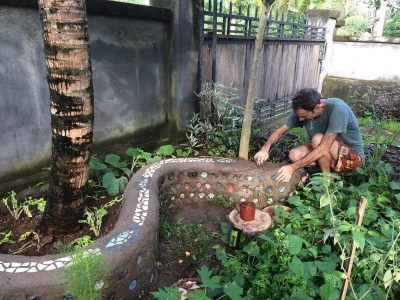
A simple raised bed garden bench - Indonesia
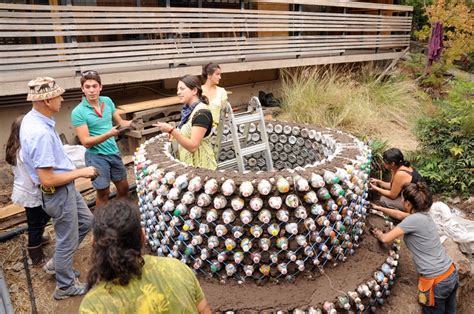
A spiral cob and ecobrick construction - UK
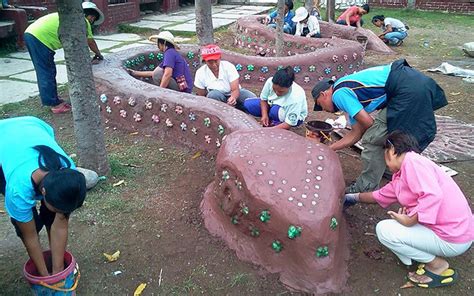
An ecobrick snake play-bench for a public park - Philippines
Earth Building is known by different names around the world– “adobe”, “wattle-and-daub”, “cob”, “organic cement” etc. These low-energy and low-cost traditions have resulted in incredibly beautiful and varying structures around the world. Despite their unique shapes and forms they share certain fundamentals in common– such as using local materials, including the community, and enriching the local ecology. Our ancestors took these principles for granted, but today its more important than ever to learn from the wisdom embedded in their ways.
Earth building contrasts starkly with today’s conventional construction methods.
Whereas commercial construction methods rely on energy-intensive, industrial processes and are ecologically depleting, earthen building is ecologically enriching.
Whereas commercial construction is powered by petroleum energy and dependent on capital, earthen constructions uses local resources and community collaboration.
Wheras, commercial construction emits Co2 and releases plastic, earth and ecobrick building strives to secure them.
Whereas commercial construction has a top-down owner/boss/employee structure, earthen building strives to involve everyone in the community.
Keeping it Local
Earth building is all about improvising with what you’ve got beneath your feet.
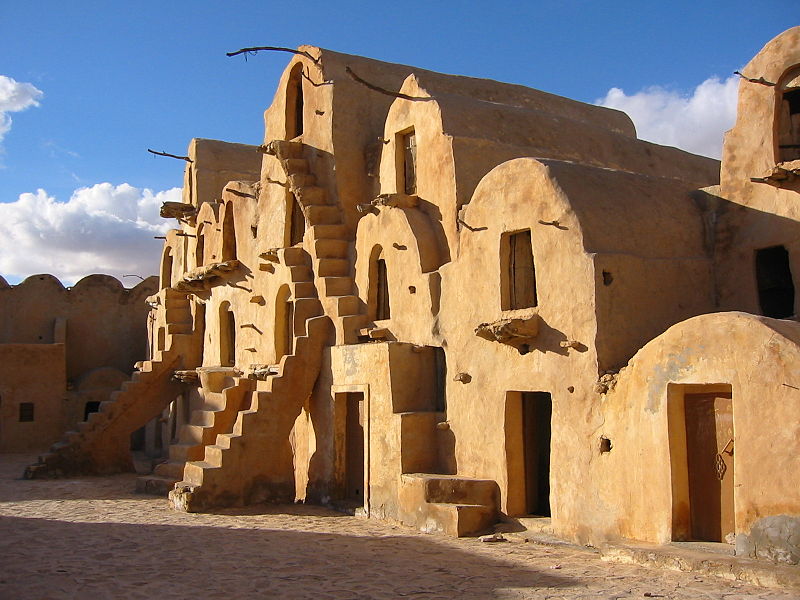
Mud built granaries in Tunisa
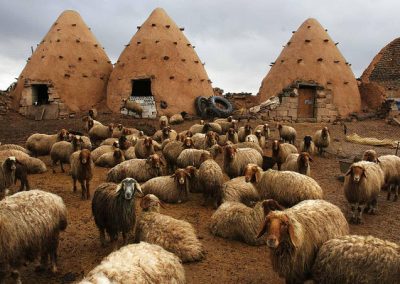
Traditional Syrian Earthen "beehive" homes
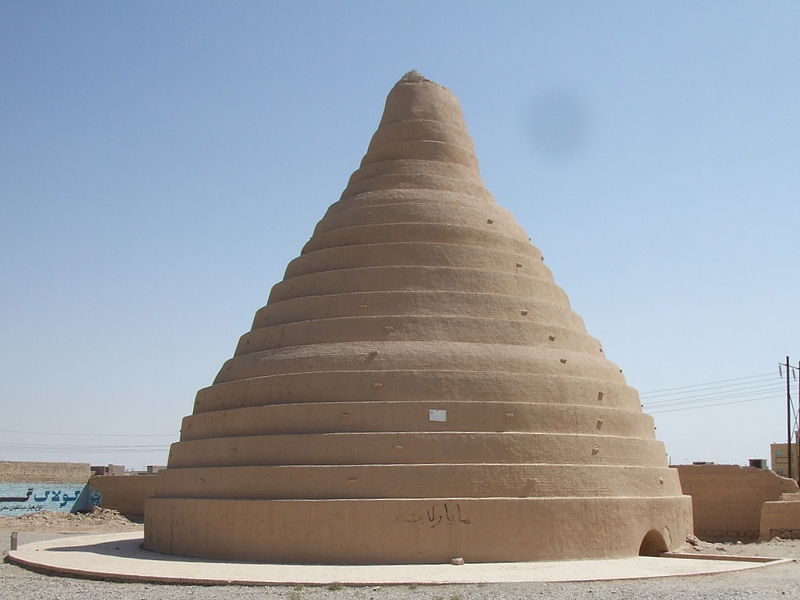
Ancient Persian Refrigerator - Yakhchal in Yazd Province
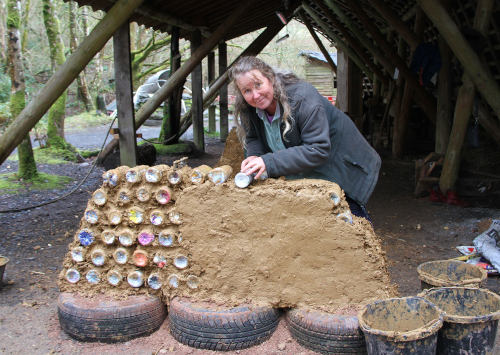
Fully organic earth and ecobrick technique -- Wales, UK

An ecobrick and cob circular entrance-way -- Sabangan, Philippines
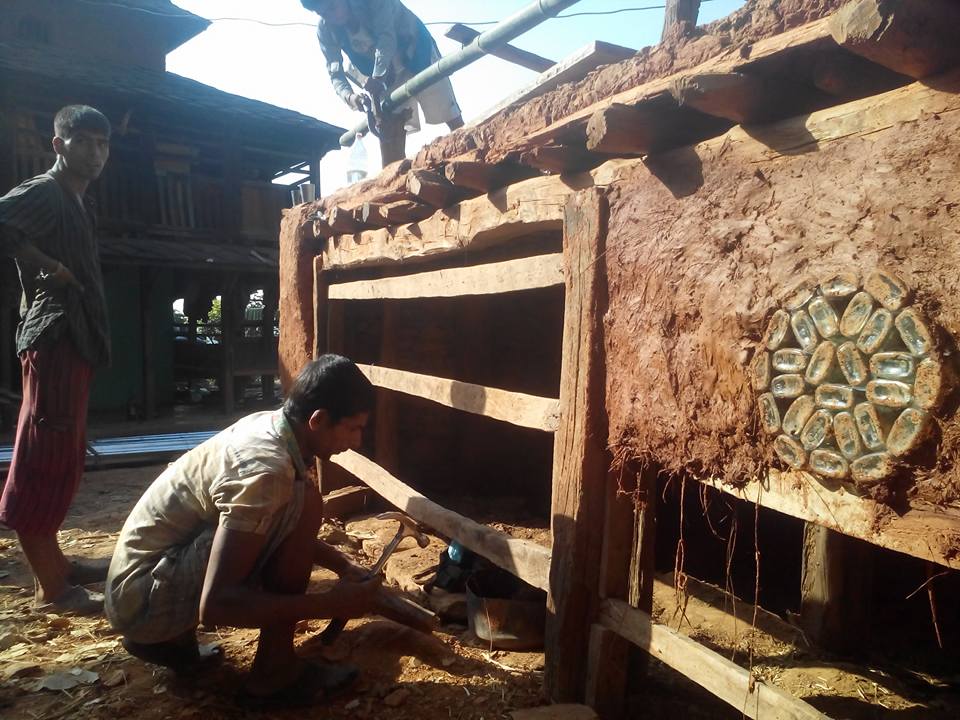
An ecobrick and glass bottle wall -- Nepal
If there’s anything that the very different earth building traditions around the world have in common it is that they used what was local to them. Earth building makes use of the earth (sand, clay, rock, pebbles, etc.) that is nearby along with the local organic materials (wood, bamboo, reeds, grasses, etc.). By keeping it local, we reduce the need for long haul transportation. This ensures a low-energy impact footprint for our building and it encourages the community management of regrowing trees and bamboo to meet local needs.
There’s an added bonus. As we’re using the same resources that our neighbours have access to, they can copy us! As we all work with the same resources, we can learn from the trial and error of our neighbours, and they can learn from us. Sure and steady, our methods get better and greener. Since our shared resources come from nearby, we can also work together in the regrowth and management of resources.
Today’s commercial construction, in contrast, relies on industrial processes and the transportation of materials from far away. Often these materials involve much energy in their fabrication and transportation. Because we don’t get to see where they come from, we are often not aware of the mining, smelting, and energy expenditure behind them.
Spiral Design
When building with earth we plan for the destruction of our creation, the reuse of its materials-- in a way that ensures that the next construction will be enriched by the first.
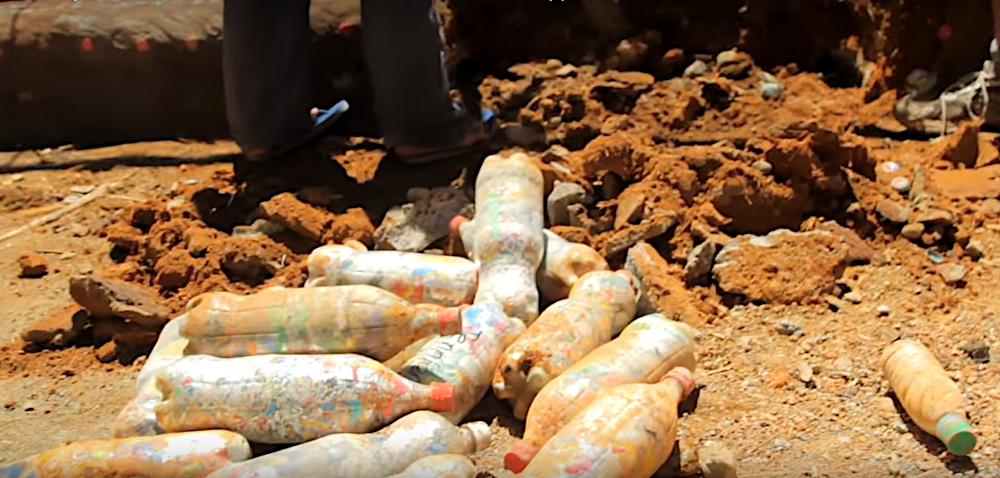
Ecobricks carefully removed from a destroyed construction and ready to be used again.
Essential to Earth and Ecobrick building and the effective sequestration of plastic, is its spiral design. This means that whenever we build with ecobrick we ensure that at the end of the construction, the ecobricks can be extricated undamaged and used again.
This is one of the chief advantages of building with ecobricks and earth. Unlike cement, when an earthen construction comes to its end, the ecobricks can be extracted undamaged. During the construction life-span, the earth completely protects the ecobrick from all forms of degradation. Then at the at its end, cob/adobe/waddle readily crumbles (especially after some soaking) to release the ecobricks un-scarred. Cement, in contrast, crumbles into stiff hard edged rubble that can easily rupture a plastic bottle.
In addition, not only can the released ecobricks be reused, so too can the rubble earth. As it has already been mixed to the requisite ratio, only water needs to be added. After some soaking the earth can be remixed and reapplied in a new construction!
ℹ️ Learn more about: Spiral Design
Collaboration Powered
Earth and ecobrick building is powered by mandalic community collaboration rather than petroleum or capital.
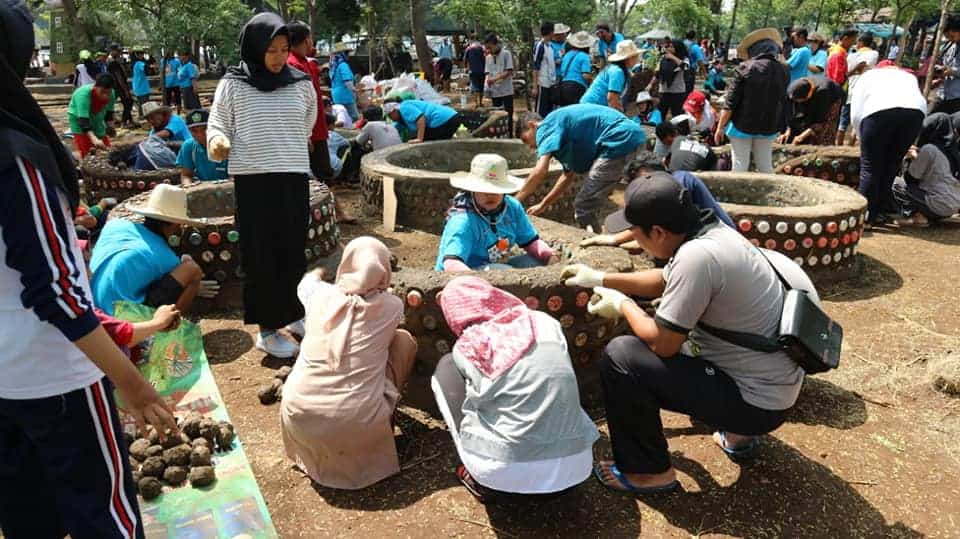
Earth and ecobrick building methods are designed from the ground up to be replicable, non-capital, non-petroleum, collaboration powered.
Unlike conventional or commercial building methods, that require paying specialized architects, engineers and builders, every element of earth and ecobrick building is designed to be accessible to the participation and contribution of everyone in the community. These transcaste building methods are non-hierarchical and readily involves all genders and ages in the various processes.
In this way, rather than require machines and energy-intensive processes and materials, earth and ecobrick construction ideally are built by a community coming together using the principles of mandalic collaboration
.ℹ️ Learn more about our Mandalic Collaboration
A safe Journey through time.
Plastic is potentially a toxic material. Ecobricking and Earth Building are a way to secure plastic and put it onto a safe and secured long-term trajectory.
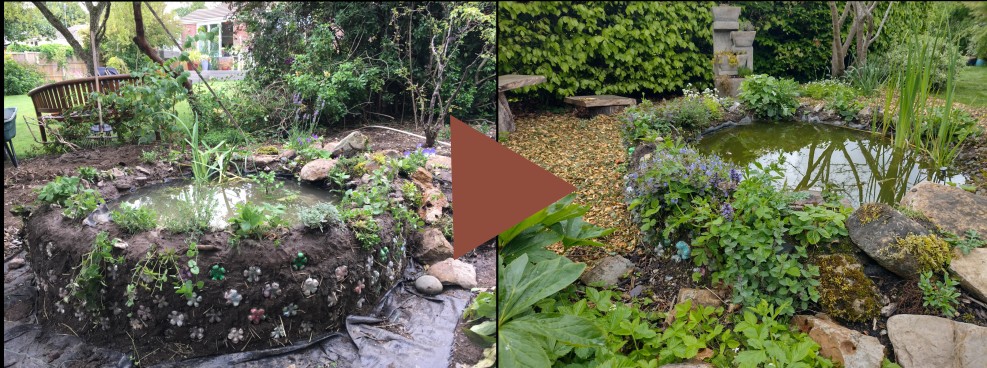
Supporting biodiversity: Before and after shots of an earth and ecobrick pond, made with 200 ecobricks in the UK.
The danger of plastic comes from its exposed surface area. To the extent that plastic’s surface area is exposed to the elements, it will steadily break down over time into smaller and smaller pieces (microplastics) and leach toxins. By packing and covering ecobricks we keep the plastic safe and secure.
Packing plastic into an ecobrick results in the terminal reduction of net surface area. An ecobrick is essentially many many square meters of plastic compressed into a very small space! Using earth to build with ecobricks is a way to further secure plastic.
Earth building involves making a mortar (known as ‘cob’, 'adobe', 'daub', ect.) to completely encase ecobricks. This way not a single square-centimeter of plastic is exposed! Without exposure to sun, friction, or heat the plastic inside the ecobricks can no longer degrade in any way.
It is also important to consider the abandonment of projects. Cob, in contrast to cement, can be more readily populated by plants. Even if long-term structures collapse, earth covered ecobricks have no way to degrade and will remain intact indefinitely. The crumbled earth gradually becomes fertile ground for plants, trees, and forest to cover.
By building with earth, using circular and spiral principles, we point our ecobricks towards a secured long-term journey through time.
We call this trajectory ‘plastic sequestration‘.
ℹ️ Learn more about our plastic sequestration
Ecobrick Construction Custodial Arrangements
The Global Ecobrick Alliance strongly recommends that in that end-of-life plans be established with the custodians of the site and construction.
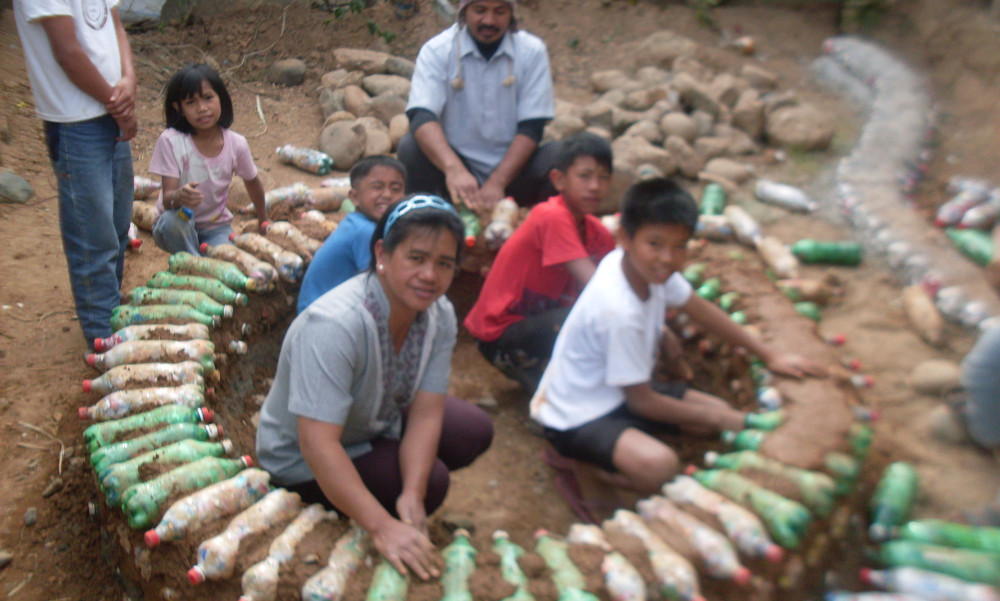
Earth and Ecobrick constructions embody large amounts of secured plastic. When building on government or community land, it is key to establish a long term custodial agreement with the owners of the property. This agreement must include yearly checkups and repairs and also a plan for the destruction of the construction to ensure the indefinite integrity of the ecobricks. This agreement must also account for the eventual removal, ownership and reuse of the embodied ecobricks.
The GEA has developed a free-use sample and template of our Ecobrick Building & Custodianship Agreement. Download the PDF and ODG versions here:
📄 Sample of Ecobrick Construction Custodial Arrangements
📄 Template GEA Earth & Ecobrick Building Custodianship Agreement
The GEA Ecobrick Construction Custodial Arrangement Contracts are licensed under a Creative Commons Attribution 4.0 International License.
Maintenance
It is important not to forget our responsibility when building with plastic.
Building with ecobricks is a big responsibility. Ecobricks represent large amounts of secured plastic, and if our constructions lack planning and maintenance, there is the risk of the plastic escaping. Planning for the maintenance and the end of the construction is a key part of earth building and the overall service of plastic sequestration.
Earth methods are ideal when they completely cover ecobricks. This effectively inhibits plastic degradation through light, heat, fire, and friction.

With the goal of inhibiting degradation pathways, we maintain our constructions:

- Earth and Ecobrick builds need to be regularly inspected.
- Cracks quickly repaired with additional cob to avoid erosion to the structure.
- The foundation and bottom of constructions are monitored to make sure they are not absorbing water from the ground.
- Exposed ecobricks (i.e. colored bottoms) that are receiving too much sun are be covered up.
After 10, 20 or 100 years, when a well maintained structure comes to its end the undamaged ecobricks can be extricated undamaged and fully repurposed.
Featured Earth & Ecobrick Projects
The GEA leads trainings and builds around the world. Check out our featured projects.
A Safe Passage Through Time
Building with ecobricks is a significant responsibility. Ecobricks represent large amounts of secured plastic that will last a long time. For this reason it is more important than ever to build using methods that embody regenerative principles.
An overview of earth building principles and methods.

